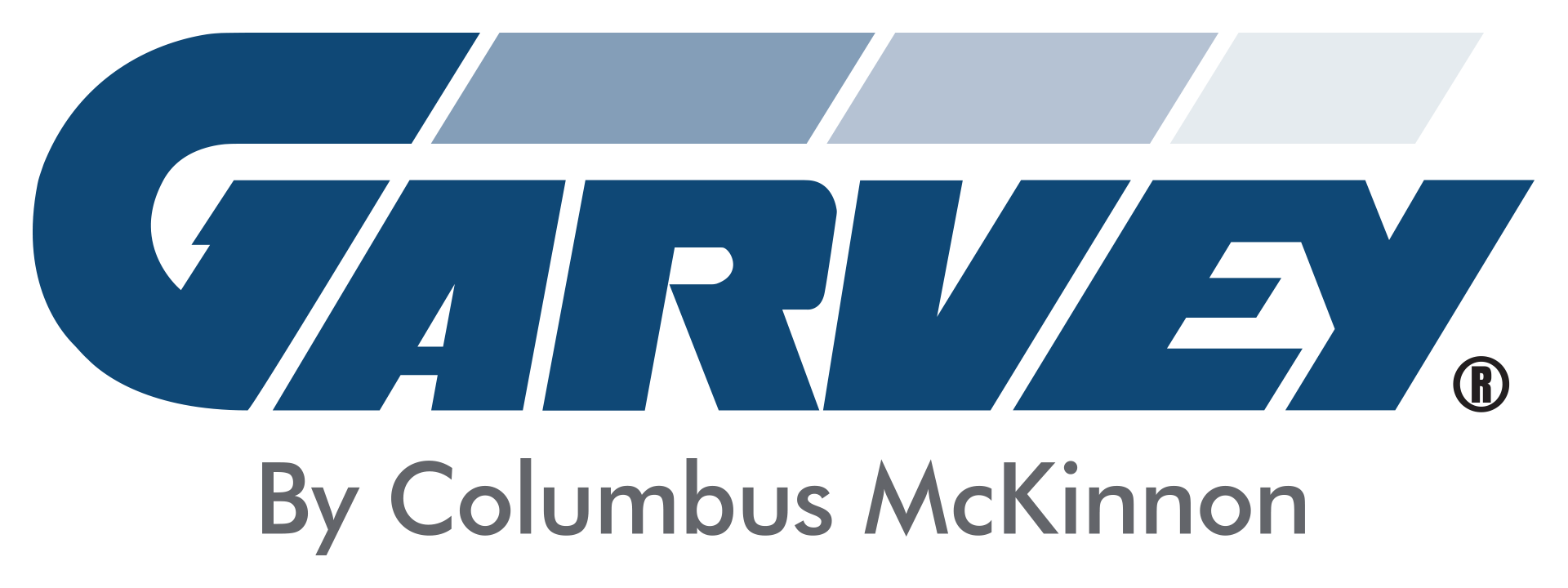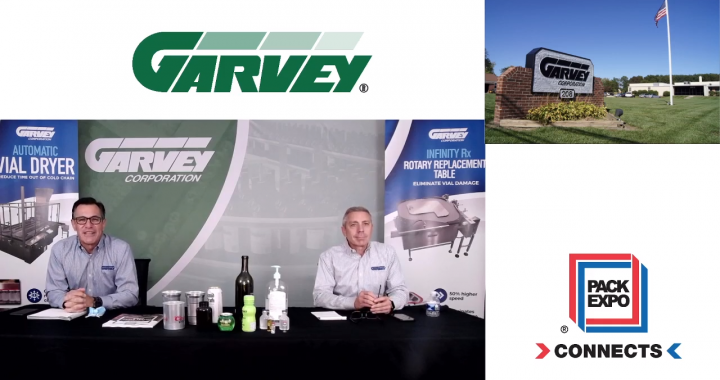Last fall, at PACK EXPO Connects, we offered hosted a discussion about accumulation solutions. In the video below, company president Tom Garvey and VP of sales Mike Earling introduce some of our most popular accumulation tables and discuss how they can help you maximize your throughput.
The belts we use provide a quiet, smooth, trouble-free performance. These conveyors can handle a wide range of products while maintaining a very stable product flow with virtually no damage or falling products.
Edited transcript
Tom Garvey: Hello, thanks for joining us today at PACK EXPO Connects. My name is Tom Garvey and I’m the president here at Garvey Corporation.
Mike Earling: And I’m Mike Earling I’m the vice president of sales. And we’re here to talk about our different types of Accumulation Systems that we have.
Tom Garvey: One of the most popular accumulation systems we have is our patented Infinity Accumulation System. And we’re going to show a quick video that shows the different types of infinities we’ve build, and some of the benefits that they can provide you and your production line. And after the video, we can go into more detail and bring up some common questions that we often get asked.
[Video] Garvey’s mission is to maximize your production. One of the ways we can achieve this, is by analyzing your production lines and incorporating accumulation systems to keep your constraint running. The Infinity Accumulation Table is one of those buffers and it’s our most versatile machine because it’s basically five machines in one. Besides it’s main function of being a buffer to protect the constraint, it can also single-file products at faster rates than any other machine on the market. It can easily get products into multiple lanes to feed a case packer or robotic system. It can also be configured to serve as a distribution system to feed multiple locations around its perimeter.
Finally, our 3D Infinity can unscramble as well as orient rectangular products. Another advantage is that products can enter the system either in a single file or in a mass flow via a conveyor or a tray loader. Garvey’s patented and pressure less loop technology eliminates back pressure and enables the infinity to easily handle even the most unstable products like small vials, tapered cups, and even reverse tapered wine bottles.
Garvey’s systems are designed to be as simple as possible, ensuring the highest level of reliability as well as the lowest total cost of ownership. The Infinity is available in sizes ranging from 15 square feet to 150 square feet. If more accumulation is needed, we’ll design a custom system to meet your requirements. The infinity will maximize your production by enabling your production line to keep moving for more information or to schedule a free Garvey Line Analysis, contact one of our sales engineers Garvey.com.
Tom Garvey: I hope that was helpful. And one of the things that is interesting today is Mike was one of the inventors of the Infinity Accumulation System. So it might be interesting to find out how the infinity got developed and invented, what issues you were having, what were you using before the infinity. And one common question is, once you explain all that, how do you know how big to make these tables? Because we can make them in various sizes as we saw on that video.
Mike Earling: Good question. So the main reason for accumulation is to help our customers increase overall throughput of their line. And we can help with that to identify the constraint of the production line and keep your constraint moving when it’s capable of running. But to answer Tom’s question, we make many different series of accumulation systems and they have evolved over the course of the last 20 to 30 years.
And so how we came up with the Infinity is, we had a project for a customer and we were running a PET bottle. We tested it, we were able to run it during the test period. And then when we built the equipment, our customer came to us and said, “This is great. We need to run one other bottle, which is a high density polyethylene bottle.” And it would not work on our system. So we had to figure out a way of eliminating. We had a Bi-Flo. That’s what we were quoting at the time, but the reversing lanes were causing the bottle to spin and fall. So we had to come up with a way of preventing that bottle from hitting two chains and spinning. And that’s how we came up with our Infinity Loop. So, hope that answers that question.
Tom Garvey: Yes. And it’s worked with a lot of unstable products. That’s when we created the infinity. That’s when we started with getting into the wine industry with the reverse tapered bottles. On the Infinity, there’s no back pressure and there’s no change in direction, so very tall, unstable products work very well on the Infinity. That’s what we specialize in.
Mike Earling: Right. What causes back pressure is when you have a product stationary and the chain running underneath of it, that causes back pressure and our Infinity eliminates that from happening. So if the downstream equipment stops, we extend a gate and we start accumulating on the table and it’s always in motion. The product is always flowing in one direction, and that’s in a circle, but there’s no back pressure. We can build the table up from the outside to the inside. And we can also get a First-in,First-out type of effect with our Infinity if we enter in a different location.
So we have multiple patents on the Infinity, and it runs anything from small vials to rectangular product using our 3D patent to tapered wine bottles at pretty high rates of speed. One of the biggest issues with back pressure, if you have it, when you’re dealing with a wine bottle, one of the biggest concerns a customer has is its label. If you see a product that is scuffed in a supermarket or a grocery store or a beverage store, if there’s any scratches on it, you’re going to put it down and buy a new one. So we have to make sure that we do not damage that label or dent a PET bottle or anything else like that.
Tom Garvey: Even in the cosmetic industry, we’ve made equipment for really high polished containers and we can’t scratch them at all either because of the way they have to look in the store.
Mike Earling: Right. And now because of the pharmaceutical industry and COVID, they’re running these vials, which is a 2ML, 3ML vial at very, very high rates of speed. And we changed our Infinity to run these vials at really really high rates of speed without having them tip over or scratch. So it can go through an inspection machine without being rejected. And we have multiple systems out that we show right here. The one to my left is a small Rx Infinity. And that is to handle small vials in a very, very small space, especially in the pharmaceutical industry. And the banner to the right is our vial dryer, and that is to take product from a cold chain, dry it, and reduce the time that that product out of the cold chain from 48 hours to roughly about 15 minutes at the most. And then we single-file that product using our Infinity to feed either a labeler or inspection machine.
Tom Garvey: And with the rates of today’s labelers and inspection machines, we’re the only people that can meet the rates, single-file product to get it to at the rates that they can hit 800-900 files per minute.
Mike Earling: And also to keep this product from getting scratched or being a defect because the product that’s in here could be extremely expensive.
Tom Garvey: Now we have another presentation about line analysis, but Mike, can you quickly tell, how big of a machine do you need? How do you determine how large of an Infinity you need? Because we make them in various sizes.
Mike Earling: So once we do the line analysis, we’ll identify where the constraint is on the line. And then we look at your non-constraint machine’s downtime. So in a typical line you may have a case packer on the end. And that case packer when it does go down, it takes a little time to get it back up and running. So let’s say it’s three minutes. If you have no buffer in line, anytime that case packer stops, it’s going to go down for three minutes and that is causing your filler to be down for three minutes. And if your filler is not running, you’re not making money. So what we do is put a buffer in that area. That’s just a little bit bigger or larger than three minutes. So if the case packer goes down, you can start filling that up with product from the filler.
And once it’s almost at the three minute range, you should have your case packer up and running. And then that case packer should have excess capacity and you can deplete what’s in the table and you can have your protective capacity back. So that’s how we size the table: looking at your non constraint machine’s downtime to determine the size of that. Now, when you’re going to be filling it at your filler rate. So you multiply those two together and that’ll give you how many bottles per minute or bottles you have to store on that table.
Tom Garvey: Thanks for joining us today.




